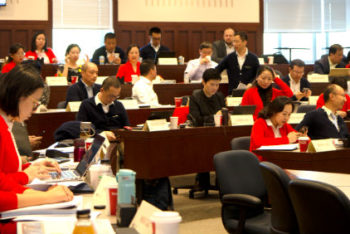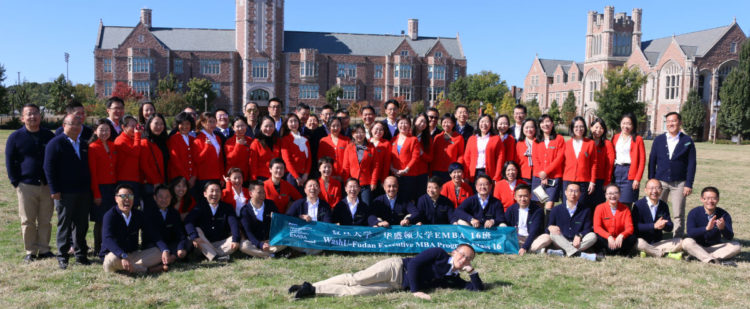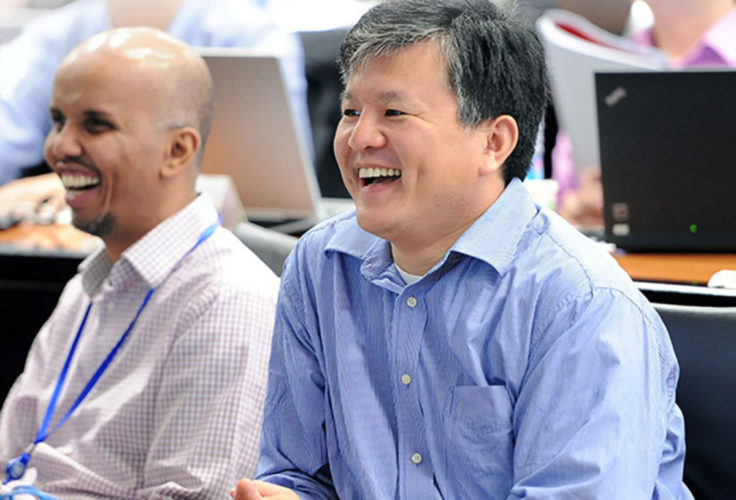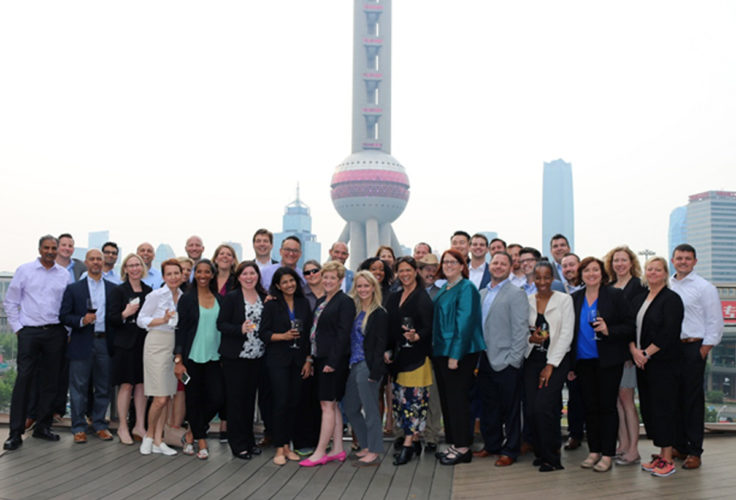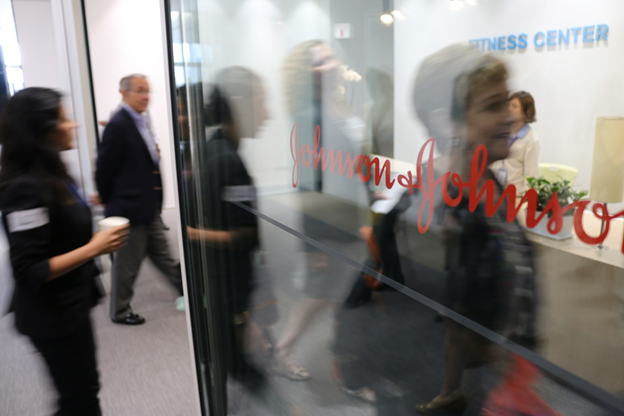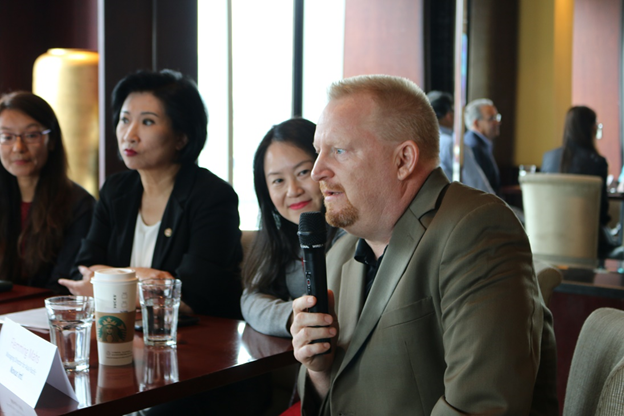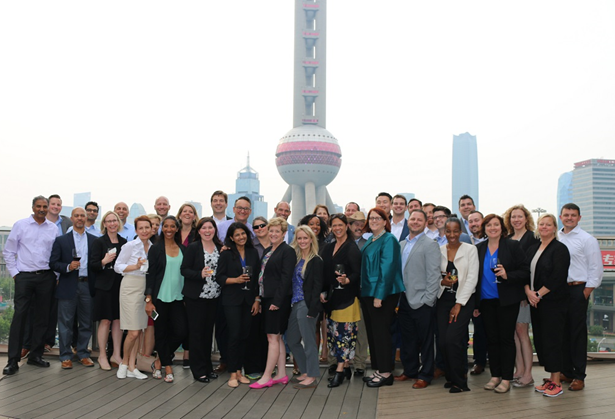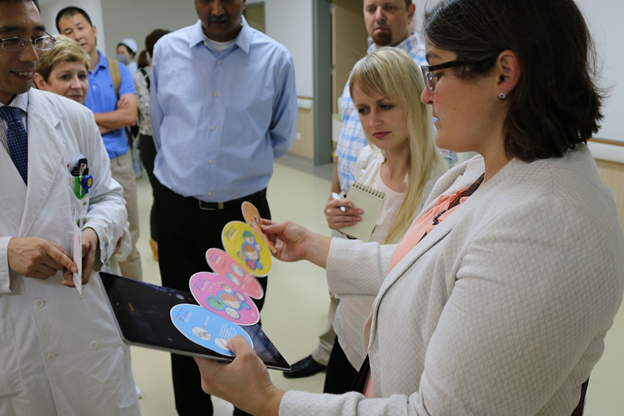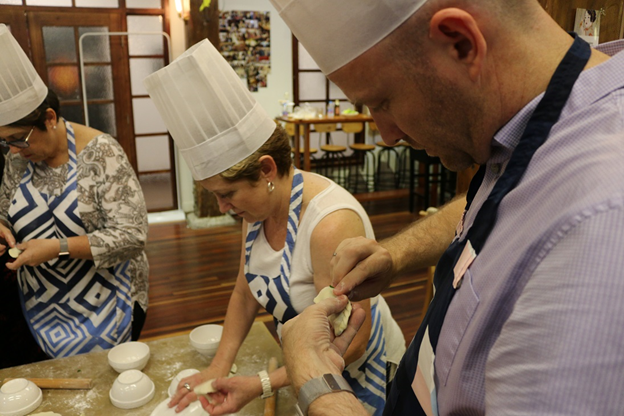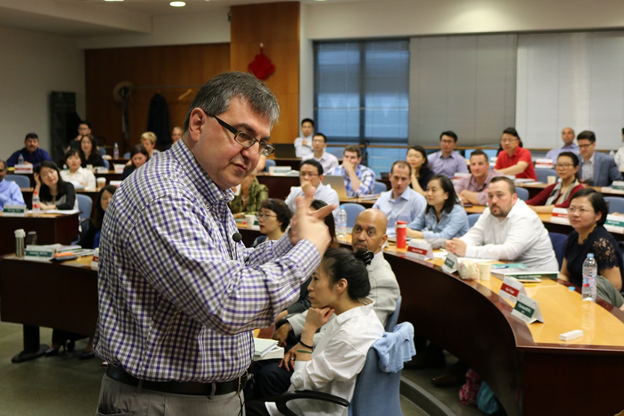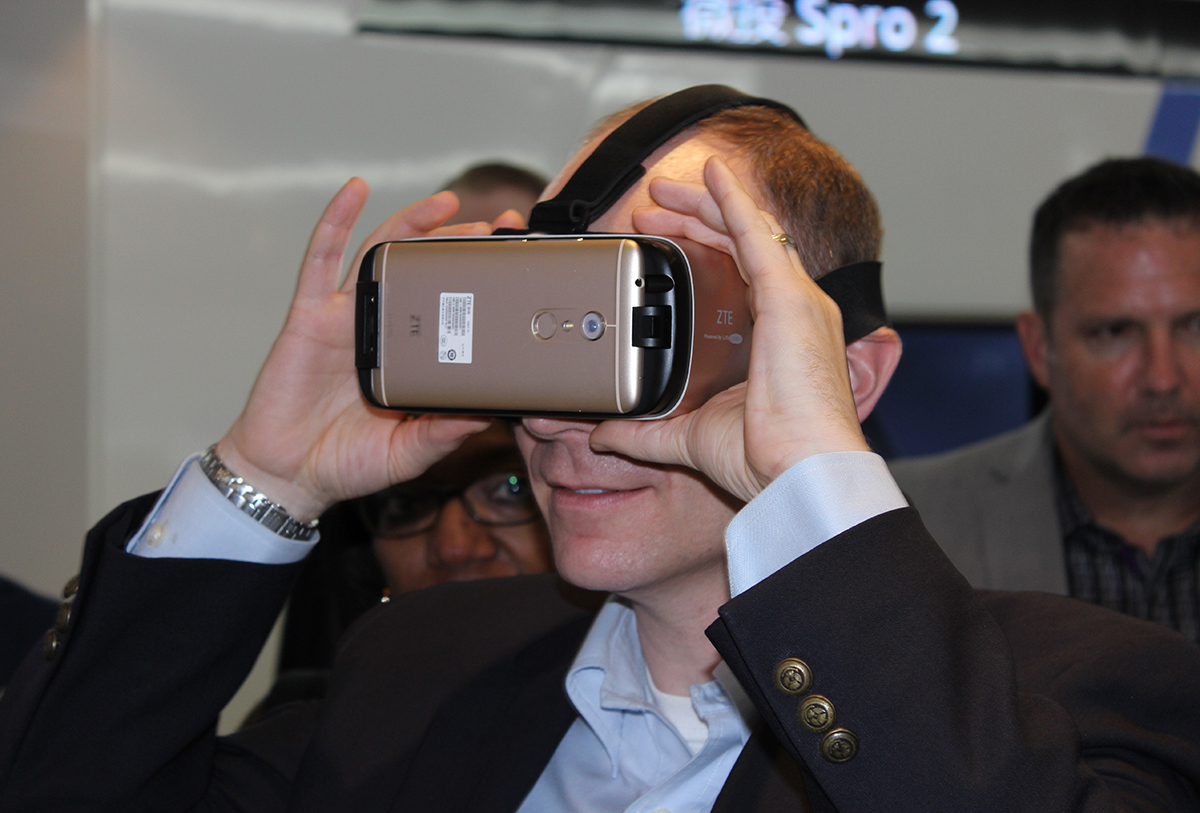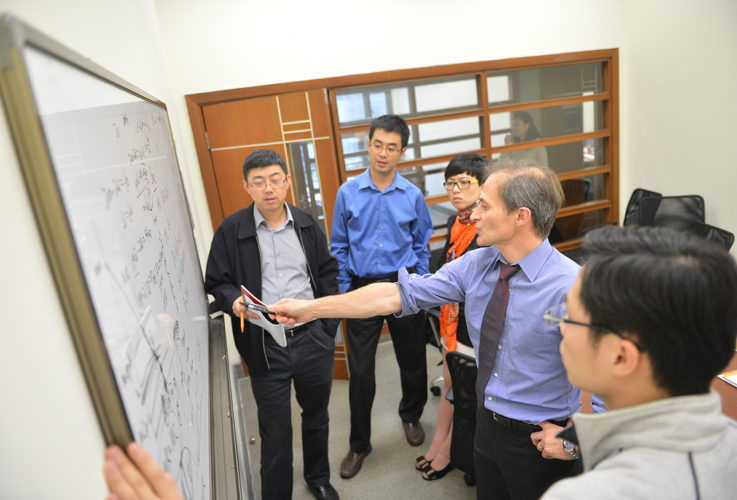The Executive MBA International Residency is often the student favorite of the program’s four required residencies. In between once-in-a-lifetime visits to historic sites in Shanghai and Beijing, EMBA students meet with program alumni and business leaders, exploring China’s unique economy, markets, and global leadership.
EMBA 49 recently returned from the International Management Residency—and if these photos from EMBA Student Services Manager Cory Barron is any indication, it was an exciting experience.
Monday: Facing strategic challenges
After a day of sightseeing at The Great Wall and Forbidden City, students buckled down for business on Monday. They kicked off the residency with site visits to Nestlé’s R&D Center and Xiaozhu.com, the Chinese Airbnb.
After a tour of Nestlé’s R&D Center, Stanford Lin, Vice President & Head of Strategy and Business Development for Nestlé-China, presented EMBA 49 with a strategy challenge. Teams were asked to develop a product to address complex strategic challenges while navigating global, regional, and industry considerations—within a 30-minute time frame.
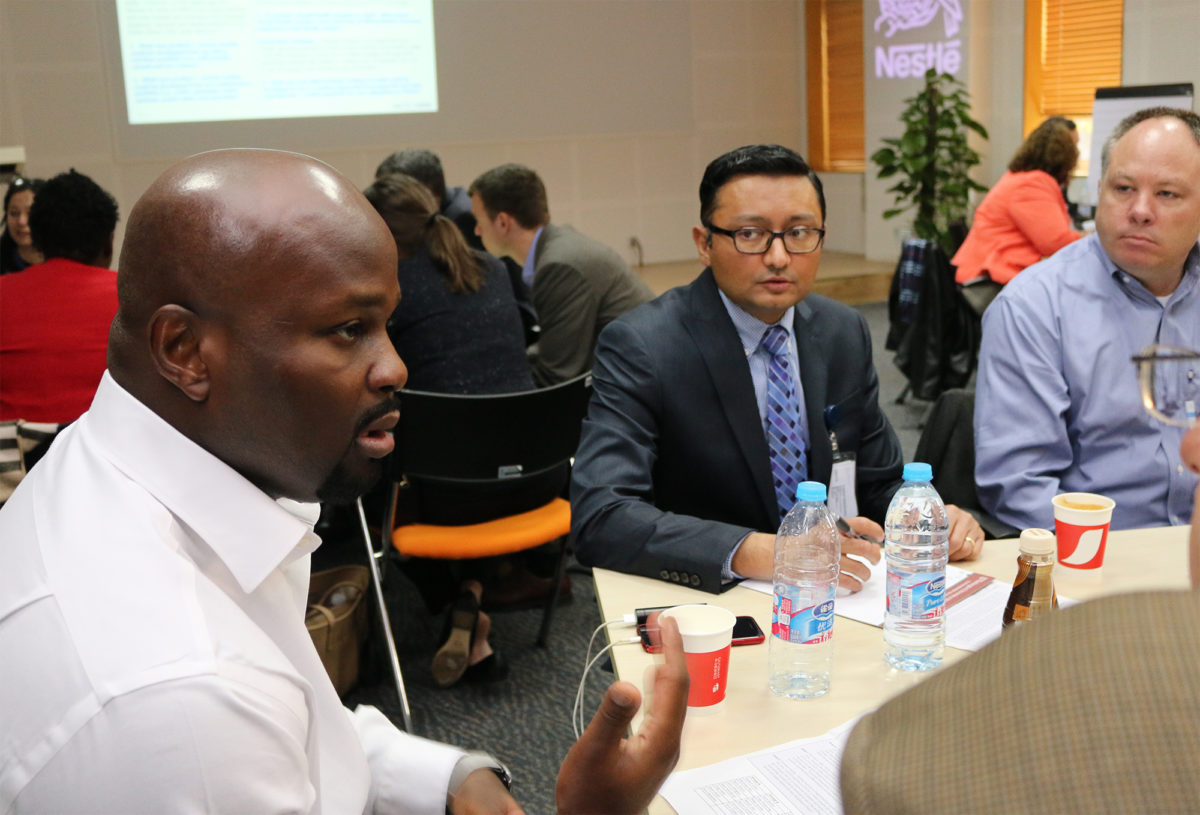
Terrell Jones presents his thoughts on the team’s marketing strategy, while team members Mehul Gandhi and Matt Reasor listen.


Melinda Chu explains her team’s product concept under the scrutiny of Nestlé’s Stanford Lin, VP & Head of Strategy & Business Development, and Roberto Reniero, Head of R&D, Nestlé China.
Next on the agenda was Xiaozhu.com. Founded in 2012, the Chinese version of Airbnb has expanded to branches in 13 cities all over the country, with house sources covering more than 130 domestic cities.
Students learned about the difficulties Xiaozhu initially faced in establishing a sharing culture in China. However, Xiaozhu.com CEO Kelvin Chen says the company is now adding 1,500 new listings per day.

Xiaozhu translates to Piglet. Piglet is a sign of a happy home.

Panlan Shi shows EMBA 49 the floor of coders building Xiaozhu.
Tuesday: Taking in Shanghai
EMBA 49 took Tuesday to travel (via high-speed train) from Beijing to Shanghai for the rest of the week’s activities. After arriving in Shanghai, the group took in Shanghai’s skyline on a dinner cruise of the Huangpu River.

Jared Ogden passes the time crocheting while speeding south on the train. He says he learned the skill while trapped by a storm in Alaska, where he had plenty of time to learn a new skill.

A closer look at Jared’s quality craftsmanship.

EMBA 49 cruising on the Huangpu River, which separates the new, glitzy Shanghai Financial District from the older, European architecture of the Bund area.
Wednesday: Exploring consumer preferences & entrepreneurship
With a few site visits under their belt, EMBA 49 was ready to delve deeper into China’s economy. Speakers from Weber Shandwick, McKinsey & Co., Sigmatex, and AmCham covered a myriad of topics, from China’s entrepreneurial digital revolution to Chinese consumers and the regional economy.
Later, students put their negotiations skills to the test with a visit to the Shanghai Fabric Market.

Darren Burns, President of Weber Shandwick–China, describes how his company’s PR and advertising campaigns are reaching the middle-class Chinese consumer online. Using live streaming is a critical part of their strategy for their Western clients trying to join the conversation in China.

Mehul Gandhi looks pleased when his negotiations calculate to an agreeable price at the Shanghai Fabric Market.

John Ortegon negotiates a better price on a new scarf while at the fabric market.
Thursday: Site visit to ZTE Corp. & business panel
EMBA 49 kicked off Thursday with a site visit to ZTE Corp.’s R&D Center. ZTE is the global leader in telecommunications and information technology, achieving an annual revenue of more than $15.3 billion in 2016.
Since 2010, ZTE has been ranked among the world’s Top 3 for patent applications under the Patent Cooperation Treaty, so it seemed a natural starting point for Executive MBAs to learn more about corporate innovation.

EMBA received a warm welcome from the staff at the ZTE R&D Center.

EMBA 49 looking sharp in their ZTE lab coats.
The cohort was then treated to a panel discussion featuring leaders from Novus Intl., Dun and Bradstreet, and Qingdao ADR Axles China Manufacturing Co.—two of whom are alumni (Chiara Radrizzani and Jesse Huang, both EMBA Shanghai Class 14 graduates).

At Thursday afternoon’s executive round table, Flemming Mahs, Managing Director of Asia Pacific, Novus Intl.; Huang Jiexi, Privacy and Compliance Director for Asia, Dun and Bradstreet; and Chiara Radrizzani, Asia Pacific CEO, ADR Group, share with EMBA 49 the cultural intricacies of doing business in China.
Friday and Saturday: Field Studies & Fudan University
EMBA teams spent Friday working on their marketing research projects, breaking out into groups for health care and consumer field study.
The students also got a taste of life as an Executive MBA-Shanghai student, sitting in on a class with Finance Prof. Todd Milbourn and exploring the campus at Fudan University, Olin’s global partner in the Executive MBA-Shanghai degree program.

Friday’s sunrise in Shanghai.
Learn more about the curriculum and residency opportunities in Olin’s Executive MBA program.
Guest blogger: Cory Barron, Student Services Manager, EMBA team
